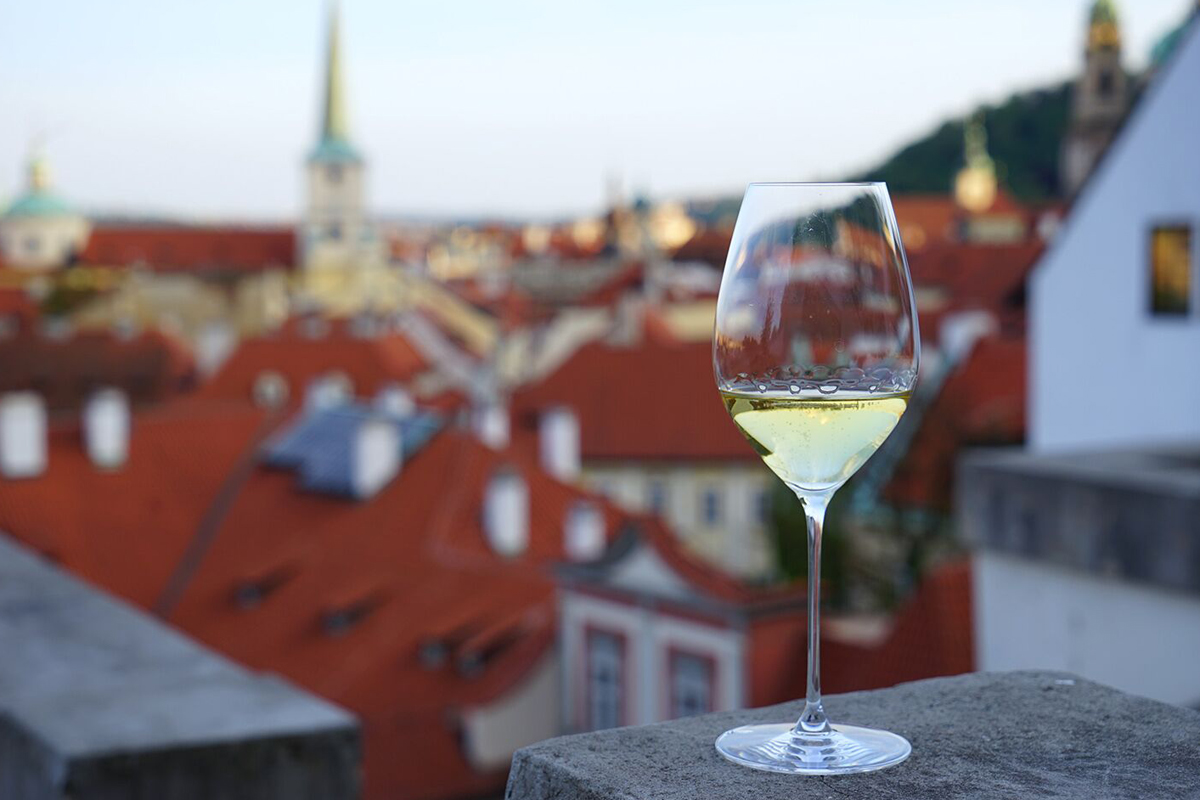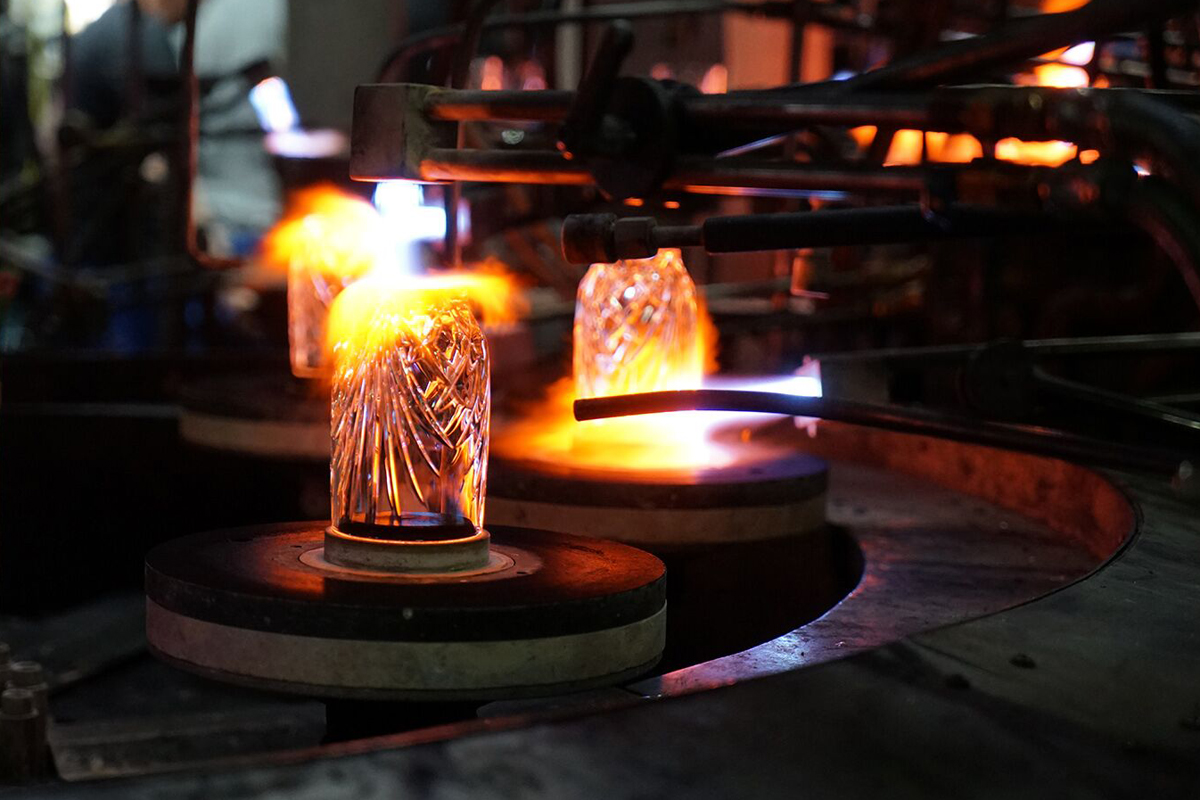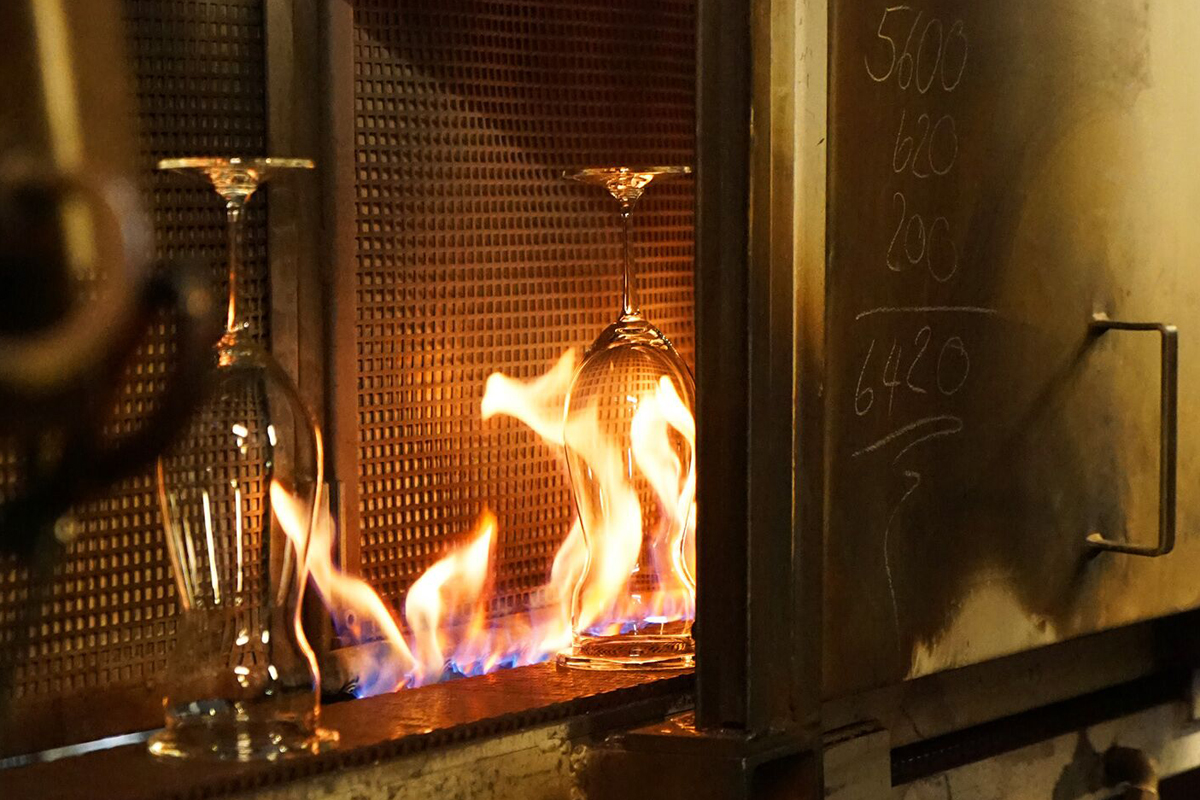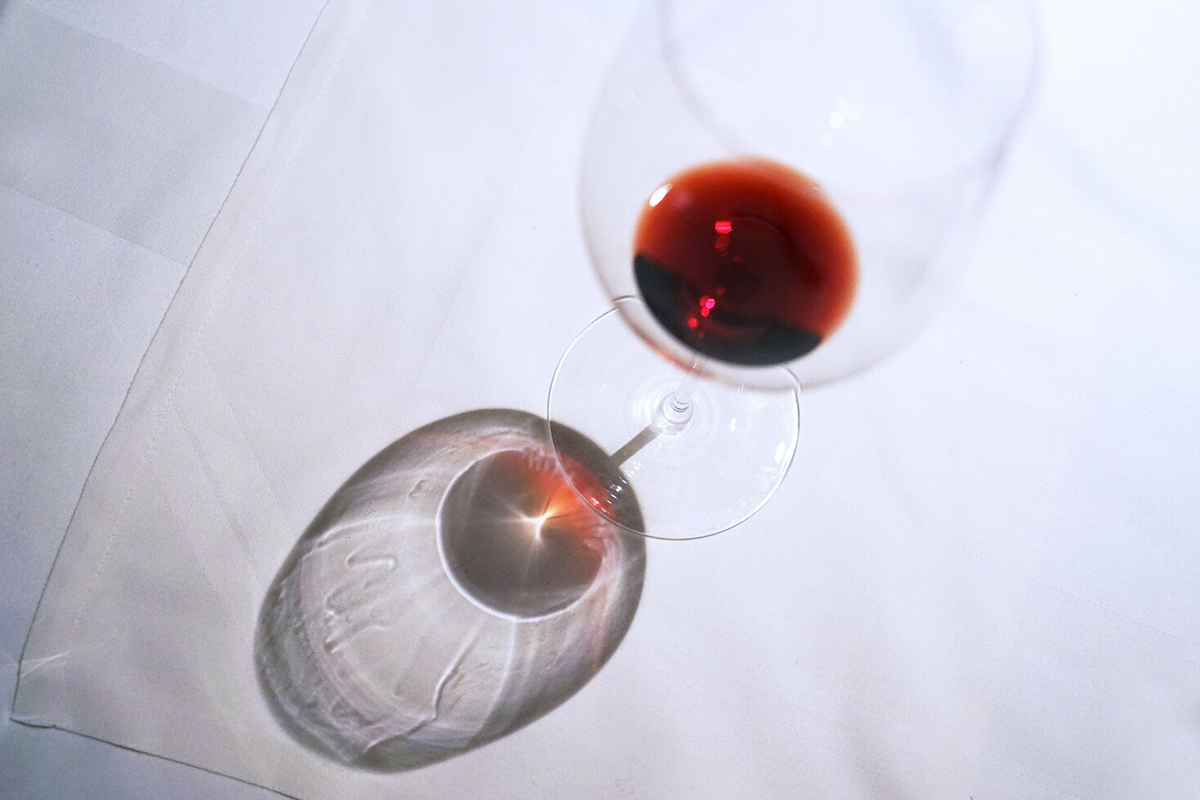Factory Visit: Riedel the Wine Glass Company
Exploring production at three European locations and learning from the 11th generation CEO


Chances are, you’re drinking wine wrong. It’s likely that you do not even know what it’s really supposed to taste like. We aren’t talking about trendy wine clubs, refrigerator temperatures, or even what kind of wine you should be drinking—this is about wine glasses. Riedel’s business is built around designing the perfect glass for different styles of wine. After venturing to the Czech Republic, Austria and Germany to see the Riedel factories and experience a Riedel glass pairing first-hand, we learned there’s much more to it than marketing speak.

Riedel is a family company—it was in 1756 when Johann Leopold Riedel first leased the Antonithal glassworks—and it still is today. The company’s history spans over 11 generations and throughout its storied development has seen contemporary Eastern Europe take shape, the industrial revolution, two World Wars, and the rise of the digital age. Over the last 260 years, the Riedel family has been one of the leading names in the glass and crystal industry, and the company has won countless awards for design innovation and its creativity—most notably for the Sommelier collection, created in 1971 to enhance the experience of drinking wine.
Today the company is run by Maximilian Riedel, the 11th generation CEO and President, a young leader who has continued to innovate and grow the company on a global scale. He too has won design awards for his O͛ stemless glassware and double-decanters that are reminiscent of dancing cobras. He has also quadrupled sales in the US and Canada in less than 10 years at the helm.

The company pays much respect to its history, yet despite its nostalgic sentiment the Riedel company has been on the forefront of glass technology and production, and continues to pursue technological advancements that help streamline production and efficiency. Today, Riedel glass is made in three locations: Weiden, Germany, where the pressed-glass Nachtmann line is made; Amberg, Germany where the Veritas machine-blown fine crystal is made; and Kufstein, the idyllic Austrian town where all of the hand-blown glass products are crafted, including stemware and the iconic decanters.

The company has invested heavily in its machine production and has two systems of production lines that are capable of making approximately 91,000 pieces per day and 28 million glasses per year. The mesmerizing, whizzing, fire-breathing machines that blow 1500-degree non-lead crystal into molds, mechanically attaches the stems, laser-trims, and fire polishes the glasses for a final time before the glasses are inspected for any flaws. Imperfect glasses (approximately 30% on a good day) are destroyed, crushed and re-melted into the crystal mix, a process that helps improve the quality of the crystal itself. Interestingly, if there is not enough recycled crystal content added to the mix each day, additional recycled crystal will be added to perfect the recipe.

The Riedel company has made efforts to continue producing its products in Europe, despite the high cost of labor. But over the years, fewer people work for Riedel as their incredibly sophisticated machines have replaced humans. New production lines have computers that instantly spot tiny flaws naked to the human eye, and newer still are the machines that sort, pack, and ship glasses around the world. This new technology means that the Riedel glassware line spans across all price points. Machine made glasses are sold for as low as $15 dollars each compared to the hand-blown glasses made in Kufstein that can cost hundreds.
The Varietal Specific wine glass was created in 1971, a concept developed by Claus Riedel (ninth generation and Maximilian’s grandfather) who came from the Bauhaus school of thought: form follows function. He developed the concept in partnership with the University of Innsbruck around the idea that the size of the glassware ultimately determined what kind of wine it is best suited for. His first glass was the Cabernet Sauvignon glass, designed with an innovative elongated goblet delivering a distinct egg-shape—a glass that was first presented to the Association of Italian Sommeliers in 1973 with rave reviews.

Each glass has been developed in partnership with expert winemakers and sommeliers who carefully analyze the experience of drinking wine in different shapes of glasses. Varietal-specific glasses are designed with three variables: shape, size and rim diameter, all of which affect the bouquet, texture, flavor, and finish of the wine. Depending on how close or far your nose is from the wine itself, you will taste the wine differently. Depending on how narrow or wide the rim of the glass is, will affect the aromatics of the wine and then its flavor. Today there are 30 types of varietal specific wine glass shapes in the Riedel portfolio, developed for different types of grapes, different styles of wines, and for various spirits including cognac and single malt whiskey.
The only way to understand the impact a wine glass can have on your wine experience is by doing a comparative tasting yourself. Riedel actually provides tasting sets of their glassware so you can easily run this experiment at home. Buy a bottle of cabernet sauvignon, merlot, and pinot noir, and taste each wine in both glasses—comparing the nosing and tasting experience of each. A wine served in its appropriate glass will taste well-balanced, perfectly acidic, and will pair gorgeously with food. A wrong glass pairing results in flat flavors, unbalanced flavor, unpleasant mouthfeel and, ultimately, unsavory pairings with food. This means, if you have been drinking wine out of those dollar store glasses (or even the incorrect Riedel wine glass) you probably have no idea what your wine could and should taste like.

Maximilian Riedel recommends buying a set of glasses for the grape varietal you prefer and another set for the style of wine your partner prefers. Start your collection there and build your collection slowly—one bottle and one glass at a time.
Emily Arden Wells is the Editor and Founder of the cocktail and travel blog Gastronomista.
Images by Emily Arden Wells












